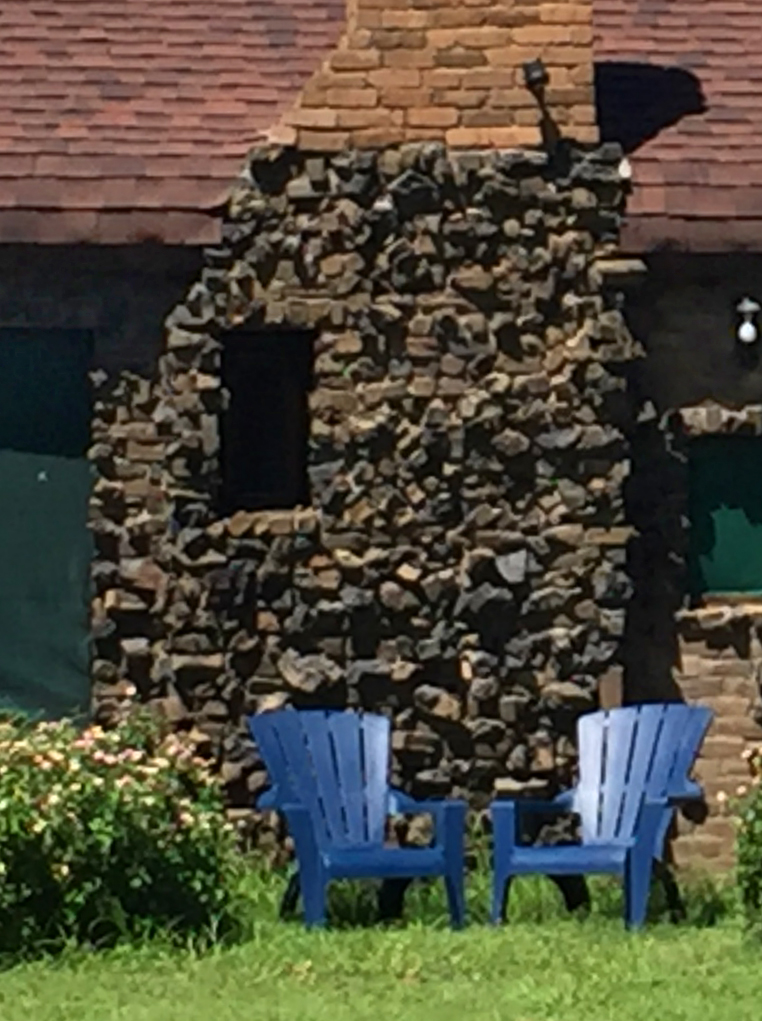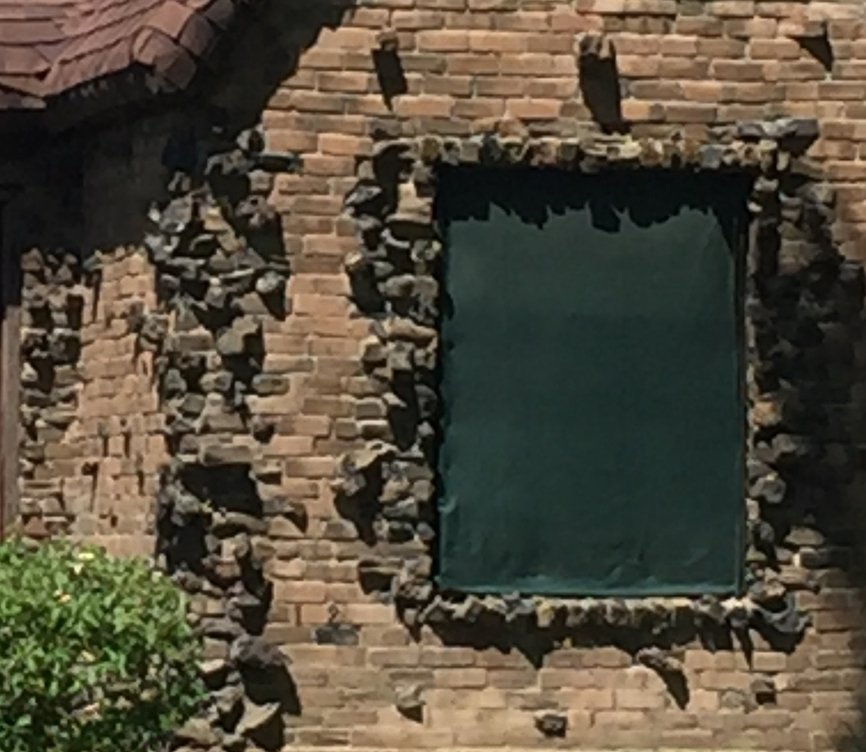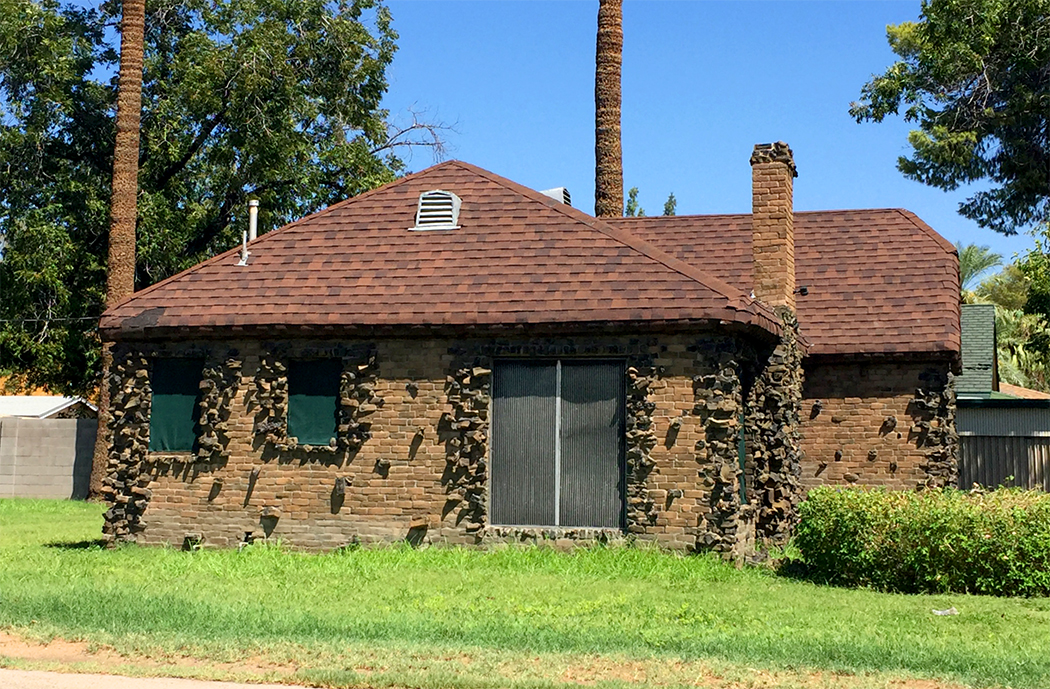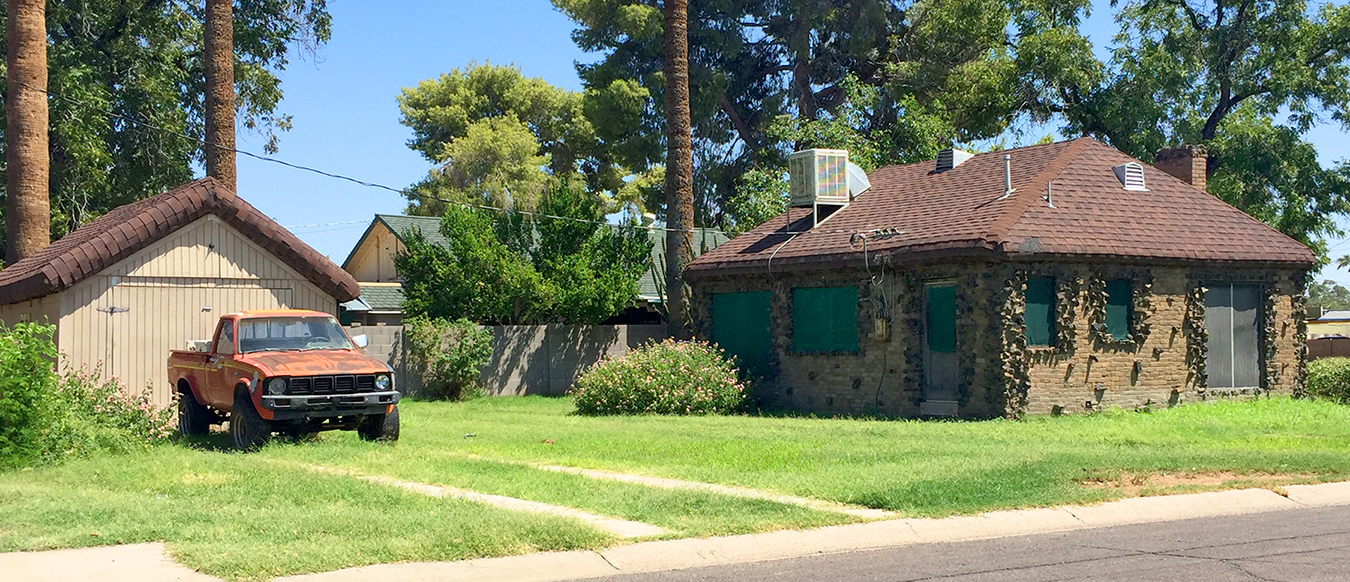




1002 E. Pasadena
I always stop by this cute little house when I go to Oregano’s on Camelback — it’s just north of the restaurant on the corner of 10th Street and Pasadena. Visible in a 1930 aerial photo, it is the only house on the block from 10th Street to 10th Place and from Pasadena to Medlock. A few other houses appear nearby, but mostly it is surrounded by farmland. It is clearly the oldest home in the area — it was built in 1924 and the rest of the neighborhood dates primarily from the 40s and the 50s.
A truly tiny house at only 827 square feet, it gets a ton of charm from the use of clinker brick, of which it is entirely made. Clinker bricks get their name from the clinking sound they make when they are banged together and are created when wet, unfired bricks are placed very close to the fire in a brick kiln, creating a durable brick that is often discolored and misshapen. These characteristics made them undesirable as a building material until the 1920s Arts and Crafts Movement brought them into vogue. Architects began incorporating clinkers into bungalows, Colonial Revivals and even Tudors! In most cases, clinker bricks are used to accent regular brick or stone, but in this case, even the main body of the walls are made of light yellow, slightly misshapen bricks. The crazy chimney and the accents around the windows and corners are made of dark, heavily distorted bricks. Together they create a kind of “wacky shack” appearance, but it was greatly admired in its day.
Great blog, Tricia! These are my favorite cottswalds! LOVE clinker. Did you know that The Main Ingredient has some clinker brick accents?
I did! They are visible on the front, under the windows, right?